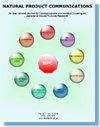油炸、冷冻、煮沸和解冻过程对新鲜鲑鱼(Oncorhynchus mykiss)的近似值、PH 值和能量值的影响
IF 1.4
4区 医学
Q4 CHEMISTRY, MEDICINAL
引用次数: 0
摘要
目标/背景:Oncorhynchus mykiss 是伊朗人最常食用的淡水鱼。它味道鲜美,营养价值高。加工和保存鱼类的目的是使其在良好的可用状态下到达最终消费者手中。研究方法本研究是一项描述性研究,使用 AOAC 标准方法比较和确定新鲜鱼和加工鱼的近似值、蛋白质和脂肪分析结果,并将本研究的分析结果与其他研究的分析结果进行比较。确定了加工方法对营养成分的影响。除鲜鱼外,还采用了 5 种不同的鱼类加工方法。研究结果采用 AOAC 标准方法分析了新鲜鱼肉和不同的加工样本,并测量了它们的 pH 值。在分析了不同样品的宏量营养成分后,以千卡为单位计算了能量值。水分含量从新鲜鱼的 72.50%到冷冻鱼的 19.50%不等,脂肪含量从新鲜鱼的 8.09%到冷冻鱼的 64.47%不等。灰分含量为 4.82% 至 5.82%,蛋白质含量为 10.47% 至 13.59%。结果表明,快速冷冻鱼肉可以保存高比例能量的营养成分。建议食用这种样品,其次是在烤箱和热水中解冻的样品。油炸和水煮样品在质量和能量值方面处于次要地位。结论由于这种鲜鱼的脂肪含量较高,如果鱼饲料及其营养是具有较高生物价值的蛋白质材料,那么增加肉类蛋白质的比例对其生长是有益的。本文章由计算机程序翻译,如有差异,请以英文原文为准。
Effects of Frying, Freezing, Boiling, and Thawing Processes on Proximate, PH and Energy Values of Fresh (Oncorhynchus mykiss)
Objective/Background: Oncorhynchus mykiss is the most popular type of freshwater fish consumed by Iranians. It has delicious taste and high nutritional value. The purpose of processing and preserving fish is to get it to the end consumer in a good, usable condition. Methods: This study is a descriptive study that compares and determines the analysis results of proximate, protein, and fat between fresh and processed fish using the standard method of AOAC and compares the analysis of this study with that of other studies. The effect of the processing methods’ nutritional composition is determined. In addition to fresh fish, 5 treatments are used for the 5 different methods of fish processing. Results: The fresh fish and the different processed samples were analyzed by standard AOAC methods, and their pH was measured. After analyzing the macronutrient compounds of different samples, the energy values were then calculated in kcal. The moisture content ranged from 72.50% for fresh fish to 19.50% for frozen fish, while the fat content ranged from 8.09% for fresh fish to 64.47% for frozen fish. The ash contents were found to range from 4.82% to 5.82%, while the protein contents were found to range from 10.47% to 13.59%. The results showed that quick freezing of fish preserved nutrients with a high percentage of energy. This sample was recommended for consumption, followed by samples thawed in oven and in hot water. The fried and boiled samples were in the next stages of quality and energy values. Conclusions: Because the fat content of this type of fresh fish is high, and if fish feed and its nutrition are protein materials with high biological value, it will be useful to increase the percentage of meat protein for it to grow.
求助全文
通过发布文献求助,成功后即可免费获取论文全文。
去求助
来源期刊

Natural Product Communications
工程技术-食品科技
CiteScore
3.10
自引率
11.10%
发文量
254
审稿时长
2.7 months
期刊介绍:
Natural Product Communications is a peer reviewed, open access journal studying all aspects of natural products, including isolation, characterization, spectroscopic properties, biological activities, synthesis, structure-activity, biotransformation, biosynthesis, tissue culture and fermentation. It covers the full breadth of chemistry, biochemistry, biotechnology, pharmacology, and chemical ecology of natural products.
Natural Product Communications is a peer reviewed, open access journal studying all aspects of natural products, including isolation, characterization, spectroscopic properties, biological activities, synthesis, structure-activity, biotransformation, biosynthesis, tissue culture and fermentation. It covers the full breadth of chemistry, biochemistry, biotechnology, pharmacology, and chemical ecology of natural products.
Natural Product Communications is a peer reviewed, open access journal studying all aspects of natural products, including isolation, characterization, spectroscopic properties, biological activities, synthesis, structure-activity, biotransformation, biosynthesis, tissue culture and fermentation. It covers the full breadth of chemistry, biochemistry, biotechnology, pharmacology, and chemical ecology of natural products.
 求助内容:
求助内容: 应助结果提醒方式:
应助结果提醒方式:


